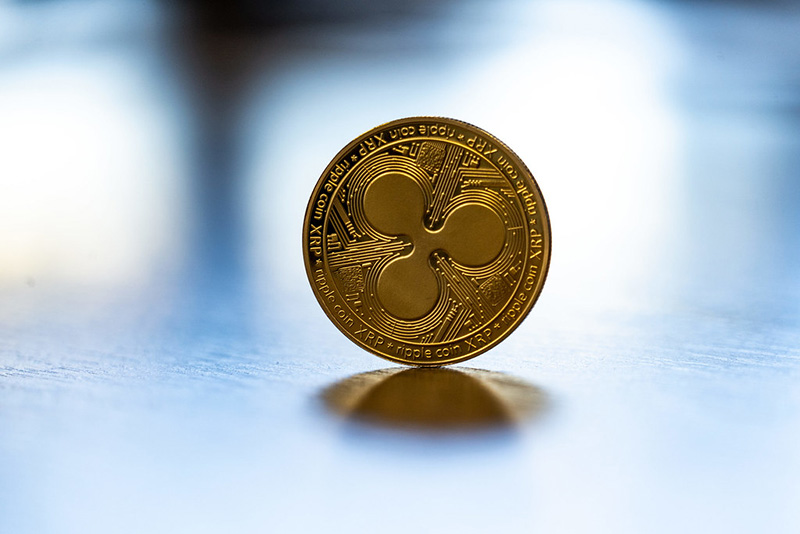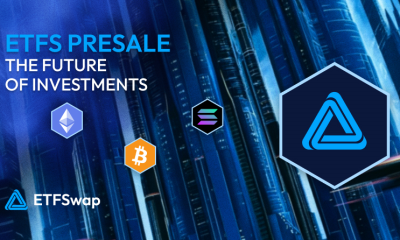Ripple
How Ripple Stacks Up to Other Cryptocurrencies in 2021

The world of crypto is always evolving. Since the launch of Bitcoin, the estimations of digital forms of money are gradually expanding. Even within a short timeframe, the estimation of cryptocurrency prices has increased by thousands. This noticeable boost has resulted in cryptocurrencies becoming more attractive assets to investors. Among the most valuable crypto available is Ripple.
Currently ranking at #6 on the CoinMarketCap, Ripple is a digital currency that has managed to climb the ranks to join such illustrious names as Bitcoin, Ethereum, and Tether. In fact, for a long time, it was the third-largest cryptocurrency in the market before Tether came along and took its place.
However, despite its value, how does it match up to other cryptocurrencies? More importantly, is it worth investing in?
What is it?
Ripple is the name for the digital currency, XRP, as well as the open payment network where the currency is transported. It was founded in 2012 and was intended to complement fiat currencies and cryptocurrencies rather than compete with them.
The cryptocurrency’s main goal is to facilitate secure, instantaneous, and economical global financial transactions. It is worth noting that XRP transactions are less expensive than conventional money transfer methods. Moreover, they allow transfers to be completed in a matter of seconds rather than hours or days for traditional bank transactions.
Ripple is adamant on pushing the “Internet of Value” (IoV) narrative. To elaborate, Ripple believes that the transfer of money and information should occur at the exact same speed. For example, someone should be able to send money at speeds akin to sending a text.
Bitcoin vs. Ripple
The Bitcoin vs. Ripple comparison is not a fair one since they are completely different.
Launched in 2009, Bitcoin is the largest cryptocurrency in the world based on market capitalization. In contrast to fiat currency, bitcoin is created, distributed, traded, and put into storage through a decentralized ledger system (aka. blockchain). Bitcoin’s primary purpose was to serve as a worthwhile alternative to traditional fiat currencies that are backed by countries.
Bitcoin is primarily a digital currency with the intent of serving as payment for goods and services. Ripple, on the other hand, is a system of payment settling and remittance, as well as a currency exchange designed for payment networks and banks. The idea is to provide a direct transfer system for assets like money and gold. It settles approximately in real-time and is a less costly, more transparent, and secure alternative to transfer systems that banks often use.
While Bitcoin is based on blockchain technology, Ripple does not use blockchain in its operations. Instead, it uses a distributed consensus ledger that utilizes XRP crypto tokens and a validating server network.
Ethereum vs. Ripple
Ethereum is an open-source platform running on blockchain technology. It is used to construct and distribute financial services and various applications. As a blockchain network, Ethereum operates as a decentralized public ledger that verifies and records transactions. Users can create, issue, and use applications on the platform. Moreover, they can use its Ether (Ethereum’s native token) as payment.
When it comes to the differences between Ripple and Ethereum, the most fundamental is that there is ambiguity as to whether the former is centralized or decentralized. The latter, on the other hand, is decentralized.
Consequently, Ethereum is an inflating supply that is based on “Proof-of-Work” (PoW). This system has miners solve encrypted codes to add transactions to the blockchain. Ethereum making the transition to “Proof-of-Stake” (PoS), which requires miners to own the appropriate amount of Ethereum to mine for more. By going from PoW to PoS, mining difficulty will also change. It will open new opportunities for mining and take control away from larger mining pools.
With each transaction, a small amount of Ripple is disposed of, thus making Ripple a shrinking supply. However, it is by minuscule amounts proportionate to the overall supply, including the Ripple detained in escrow. Up to one hundred billion Ripple coins currently exist and roughly 38 billion of those are circulating.
Is it a good investment?
XRP is the only digital asset that possesses a straightforward institutional use case tailor-made to solve a huge problem. Specifically, the global payment and liquidity challenges that regularly hinder banks, corporates, and payment providers. To resolve this issue, speed, scalability, and cost-effectiveness are crucial, and Ripple provides these components.
XRP has piqued the interest of traders thanks to its sharp 2021 gains. In January, it reached its lowest price of $0.20 per coin, but it managed to rise to $0.61 in mid-February for a brief period. Ripple’s price will continue growing this year, possibly even reaching $2, according to several crypto observers. Since Ripple will likely continue to grow, an array of companies and organizations are opting to invest in it.













